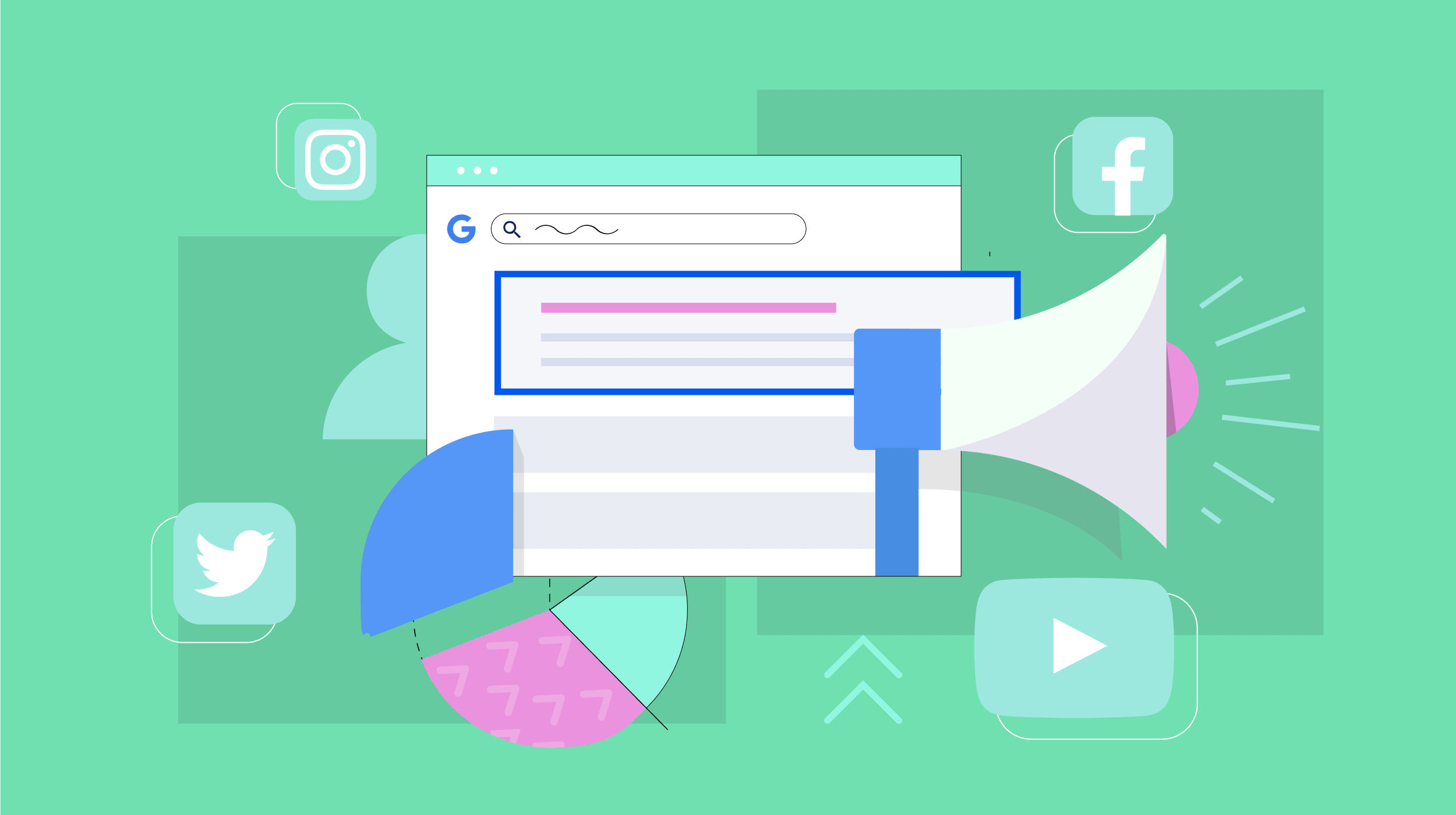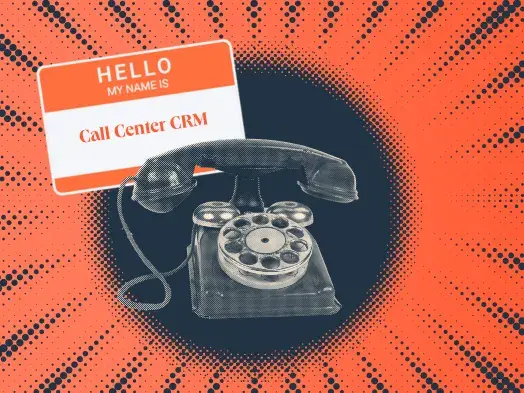How to Develop a Well-Rounded Customer Service Strategy
It’s an old adage in the business world that the “customer is king.” Good customer service is considered the cornerstone of increasing and maintaining profitability — and that’s where your hand-picked customer service team comes in. A good customer...

It’s an old adage in the business world that the “customer is king.” Good customer service is considered the cornerstone of increasing and maintaining profitability — and that’s where your hand-picked customer service team comes in. A good customer service team can raise your company’s reputation, attract, and retain customers, and help spread a positive attitude about your brand.
Good customer service encourages customers to return and do more business with you and helps build a loyal base for your company to grow on. It’s also good for employee retention — employees who see their company is focused on treating the customers well and making them feel valued, they’re more likely to remain with the company and share its values.
But delivering good outstanding customer service is more than just having representatives with a positive attitude and a hassle-free return policy (though those things are still important). You need a comprehensive and well-rounded strategy if you’re going to take your customer service to the next level. Ideally, your customer service strategy should line up with your marketing strategy, to make the most of both.
Why You Need a Strategy
Why do you need a well-rounded customer service strategy? There are several reasons:
First, consider the high cost of getting new customers as compared to the cost of retaining them. The majority of customers cease doing business with a company because they feel poorly treated by that company — and they will tell others about it. In the age of social media and viral posts, that can have disastrous consequences. And new customers cost 5 to 10 times the money to acquire as loyal customers cost to retain.
With that in mind, the goal should always be to make customers feel valued. Valued customers keep coming back, and may do so despite better offers from the competition. Think about it this way: a referral from a loyal customer costs you absolutely nothing. You don’t have to make room in the budget for it. A loyal, happy customer will tell others about how they felt valued and appreciated, and will essentially become your ambassadors, giving you what amounts to free advertising.
Your customer service strategy should start with this very specific goal in mind — to create more loyal customers, and retain the ones you have.
Another great reason to have a well-rounded customer service strategy: it creates harmony and synergy in your business. When a strategy is codified, explained, and understood, everyone knows where they stand. Employee roles are clearly defined, and there is a process in place to help make sure customer relations go smoothly and issues are resolved in a timely manner.
11 Steps to Creating a Well-Rounded Customer Service Strategy
Now that we’ve established the reasons why you need a well-defined strategy for improving customer service, how do you go about putting that killer strategy together? Here are some proven steps you can take to make your customer service truly soar;
Evaluate your current customer service strategy,Assess your customers’ needs,Identify your customer touchpoints,Develop a customer service vision,List your key performance indicators (KPIs) with clear measurable goals,Evaluate your customer service team,Implement the right customer service tools,Train the customer service team and give them the proper resources,Empower your customer service team,Develop a reward, incentives, and team-building plan,Create space for regular feedback from your customer service team.1. Evaluate your current customer service strategy
One of the first things you’ll have to do is take a good, long look at your existing strategy and figure out what’s working and what isn’t — and then ruthlessly eliminate anything that isn’t working. Chances are, you may already have the tools for collecting and measuring data on customer satisfaction. If not, one of your first steps should be getting your hands on that data, whether through surveys, email campaigns, social media polls, or any combination of the above.
Another way you can measure customer satisfaction is to look into the hard numbers like average resolution time, customer service abandonment rates, and customer effort score (CES). It’s one of the basic principles of customer service that the more quickly a customer’s problem can be solved, and with little to no effort, the happier they’ll be.
2. Assess your customers’ needs
Statistics have shown almost 80% of customers expect companies to know and understand their needs. Knowing what your customers want is the heart of your marketing efforts, and is every bit as vital in customer service. You can find out more about your customers’ needs through avenues like surveys, customer interviews, focus groups, and social listening.
Once you’ve identified your customers’ needs, you can distribute that knowledge through all the departments in your business. Having this information on hand has a number of positive benefits: it lets you provide faster solutions to common issues, improve your products and services, and cut down on the number of support tickets. It may take some research to get an accurate assessment of your customers’ needs, but once you have it, it will become a powerful tool for both your marketing and customer service departments.
3. Identify your customer touchpoints
A customer touchpoint is a point of contact or interaction between a customer and your business. There are more ways than ever now for customers to interact and get in touch, and it’s important to give them as many avenues as possible, so you can identify any pain points, gather feedback, and improve customers’ perception of your brand.
Your first step should be to identify what touchpoints you have in place already: print and digital ads, your website, referrals and reviews, chatbots and customer agents, email surveys, social media, reward and loyalty programs, and even your billing system. Once you’ve identified these touchpoints, you can figure out where the gaps lie, and identify additional touchpoints that should be added.
4. Develop a customer service vision
It’s easy enough to say you’re making customer service your top priority — but your strategy isn’t just for your customer service reps alone. Your strategy should flow from management to every role in your business, to make sure everyone is on the same page and understands the part they play in your strategy.
This is the essence of your customer service vision — to help employers understand your organizational goals for customer service and their importance to those goals. Having a clearly articulated ideal for your customer service will help inspire others and give them a clear idea of what’s expected of them — instead of them having merely an idea of good customer service without sufficient training or preparation.
5. List your key performance indicators (KPIs) with clear measurable goals
Now it’s time to put those goals in solid, actionable terms. Identify your key performance indicators, find out where they fall short of expectations, and set measurable, definitive goals for your customer service team to reach.
Important KPIs to measure might include:
First response timeThe average speed of answerFirst call resolutionAverage handling timeEscalation rateInbound abandon rateAverage call transfer rateCustomer satisfaction rateNet promoter scoreBy bringing your vision out of the realm of ambitions and into solid numbers, you’ll start to shape your customer service strategy in actionable, measurable ways.
6. Evaluate your customer service team
Now that you have those goals in mind, it’s time to look at your customer service team and see if they’re up to the challenge. Inspiring and encouraging your team to bring those numbers into a more desirable range will only take you so far — sometimes your team simply may not have the skill, expertise, or resources to reach the goals you’ve set. You may have to identify some skill gaps and arrange for some additional training or look into hiring additional staff if your team is under-resourced. If you truly want to make customer service a top priority, then it may take making some more room in the budget for it.
7. Implement the right customer service tools
Another way to take your customer service strategy to the next level is to look into upgrading the tools you provide for your team. The right tools, like those from Zendesk, can enable your team to maximize their efforts while reducing their potential workload through automation.
For example, auto-dialer software can automatically draw numbers from a contact list and dial them. This doesn’t mean cold-calling people — auto-dialers are used by medical offices and businesses that need to schedule appointments with customers, and this software can help automate that process. The software can even set up auto-prompts that customers can use to make appointments without the need for human interaction. This can be a major benefit to your phone support.
Social media support is another area where more support is better. Many successful businesses have already leveled up their customer service game by having social media accounts on various platforms and assigning people to check DMs periodically to monitor any incoming contact or customer service requests.
Customer service tools don’t all have to be customer-facing, either. You can employ tools like knowledge base software for internal use, so service reps have something to draw on without escalating a call or having to ask someone else for details on a policy, product, or service.
8. Train the customer service team and give them the proper resources
We talked earlier about addressing any skill gaps in your customer service team. This often means training — a word some employees and employers dread, but it doesn’t have to be a chore.
Thanks to the information age, there are more ways than ever to train employees on their customer service skills. This not only includes the traditional customer service training manuals and books, but also online courses, training apps, webinars and QA sessions, and in-person training sessions. Training might include soft skills as well as hard skills, as well as discussion of ethics, time management, and other facets of the job.
If you balk at the idea of paying for extensive training, consider the cost of getting new customers, which is 5 to 10 times the cost of retaining existing customers. Compared to that, setting aside money in the budget for training might not seem like such a bad idea.
9. Empower your customer service team
One way you can help improve those KPIs and meet those measurable goals is to give your customer service reps more power to address issues without escalating calls or calling on management to help solve a problem.
This is where additional tools can be extremely helpful, such as an email helpdesk, live chat, and customer feedback collection software. But more simply, you might give team members the ability to offer customers discount vouchers or lower prices for a product, within certain limitations, to retain the customer and keep them coming back.
10. Develop a reward, incentives, and team building plan
Another way to drive up performance is to incentivize your employees — essentially, adding goals for your team to meet that reward them directly. Good incentives should be memorable, benefit the entire team, and make them feel appreciated for all their hard work. You can also offer team-building exercises, with the caveat that ideally, they should be as enjoyable as possible for the team and not something to dread. By giving them incentives and rewards for good performance, you help keep morale high and give team members something to strive for.
11. Create space for regular feedback from your customer service team
Finally, we come back around to feedback — only now, that feedback should come from the customer service team, not the customers themselves. This is another instance where you figure out what’s working and what isn’t — give your employees a chance to talk about the challenges they’re facing while trying to meet these new goals.
A vital part of any strategy is identifying where it falls short and adjusting accordingly. Every strategy has room for improvement and giving your team the opportunity to suggest improvements and point out areas where they might need more training or resources, you not only further empower them but help make them feel valued and respected.
Developing a well-rounded customer service strategy is not quick or easy — it’s going to take time, money, resources, and effort to bring your customer service to the next level. But when you consider the benefits of high customer retention, having such a strategy in place is a great way to drive up profits, morale, and reputation.

 Hollif
Hollif 































